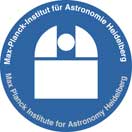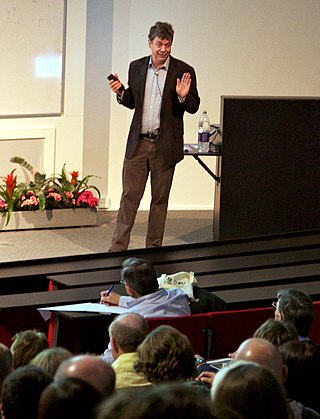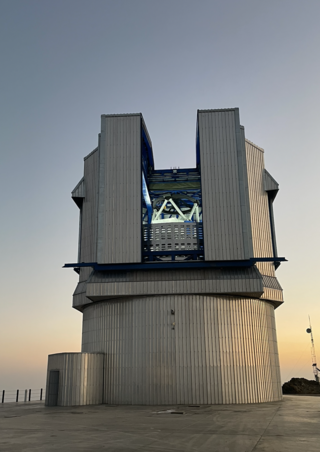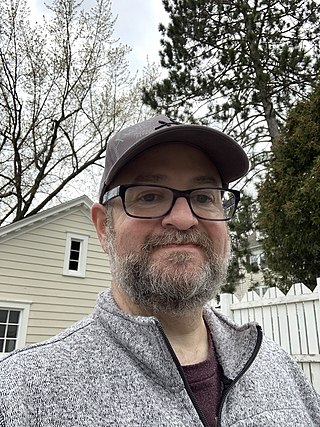This article needs additional citations for verification .(August 2018) |
The Astronomy Centre at the University of Sussex, UK undertakes research in Astronomy, Astrophysics and Cosmology.
This article needs additional citations for verification .(August 2018) |
The Astronomy Centre at the University of Sussex, UK undertakes research in Astronomy, Astrophysics and Cosmology.
The Astronomy Centre boasts 12 permanent Faculty members and 12 Postdoctoral Research Fellows, as well as many PhD and MSc students.
Their scientific research interests are tightly focused on the early universe, observational cosmology, large-scale structure formation, galaxy clusters and galactic formation and evolution. These problems are examined with a combination of theoretical, numerical and observational techniques.
Members of the Astronomy Centre have been and are involved in many international collaborations including the Dark Energy Survey, Herschel Space Observatory, LOFAR, Square Kilometre Array, Galaxy And Mass Assembly survey, Planck (spacecraft) and POLARBEAR.
The Astronomy Centre began in 1965 with the founding of an MSc course, run jointly with the Royal Greenwich Observatory, then based at Herstmonceux in Sussex . This link contains also a link to an article by Roger Tayler on the first 30 years of astronomy at Sussex.
The Astronomy Centre has a number of famous former and current members;

An astronomer is a scientist in the field of astronomy who focuses their studies on a specific question or field outside the scope of Earth. They observe astronomical objects such as stars, planets, moons, comets and galaxies – in either observational or theoretical astronomy. Examples of topics or fields astronomers study include planetary science, solar astronomy, the origin or evolution of stars, or the formation of galaxies. A related but distinct subject is physical cosmology, which studies the Universe as a whole.

Astronomy is a natural science that studies celestial objects and phenomena. It uses mathematics, physics, and chemistry in order to explain their origin and evolution. Objects of interest include planets, moons, stars, nebulae, galaxies, meteoroid, asteroid, and comets. Relevant phenomena include supernova explosions, gamma ray bursts, quasars, blazars, pulsars, and cosmic microwave background radiation. More generally, astronomy studies everything that originates beyond Earth's atmosphere. Cosmology is a branch of astronomy that studies the universe as a whole.

Sandra Moore Faber is an American astrophysicist known for her research on the evolution of galaxies. She is the University Professor of Astronomy and Astrophysics at the University of California, Santa Cruz, and works at the Lick Observatory. She has made discoveries linking the brightness of galaxies to the speed of stars within them and was the co-discoverer of the Faber–Jackson relation. Faber was also instrumental in designing the Keck telescopes in Hawaii.

Halton Christian "Chip" Arp was an American astronomer. He was known for his 1966 Atlas of Peculiar Galaxies, which catalogues many examples of interacting and merging galaxies, though Arp disputed the idea, claiming apparent associations were prime examples of ejections. Arp published Seeing Red: Redshift, Cosmology and Academic Science in 1998. Arp was also known as a critic of the Big Bang theory and for advocating a non-standard cosmology incorporating intrinsic redshift.

Allan Rex Sandage was an American astronomer. He was Staff Member Emeritus with the Carnegie Observatories in Pasadena, California. He determined the first reasonably accurate values for the Hubble constant and the age of the universe.
Professor Roger John Tayler OBE FRS was a British astronomer. Tayler made important contributions to stellar structure and evolution, plasma stability, nucleogenesis and cosmology. He wrote a number of textbooks. He collaborated with Fred Hoyle and Stephen Hawking at the University of Cambridge on problems of helium production in cosmology.

The Institute of Astronomy (IoA) is the largest of the three astronomy departments in the University of Cambridge, and one of the largest astronomy sites in the United Kingdom. Around 180 academics, postdocs, visitors and assistant staff work at the department.

Leon Mestel was an Australian astronomer and astrophysicist and Emeritus Professor at the University of Sussex. His research interests were in the areas of star formation and structure, especially stellar magnetism and astrophysical magnetohydrodynamics. He was awarded both the Eddington Medal (1993) and the Gold Medal of the Royal Astronomical Society. Following his retirement, he wrote several obituaries and biographical articles on physicists and astrophysicists.

Richard Salisbury Ellis is Professor of Astrophysics at the University College London. He previously served as the Steele Professor of Astronomy at the California Institute of Technology (Caltech). He was awarded the 2011 Gold Medal of the Royal Astronomical Society, in 2022 the Royal Medal of the Royal Society and in 2023 the Gruber Prize in Cosmology.

The Max-Planck-Institut für Astronomie is a research institute of the Max Planck Society (MPG). It is located in Heidelberg, Baden-Württemberg, Germany near the top of the Königstuhl, adjacent to the historic Landessternwarte Heidelberg-Königstuhl astronomical observatory. The institute primarily conducts basic research in the natural sciences in the field of astronomy.

Simon David Manton White, FRS, is a British astrophysicist. He was one of directors at the Max Planck Institute for Astrophysics before his retirement in late 2019.
Harvey Raymond Butcher III is an astronomer who has made significant contributions in observational astronomy and instrumentation which have advanced understanding of the formation of stars and of the universe. He received a B.Sc. in Astrophysics from the California Institute of Technology in 1969, where he contributed to the development of advanced infrared spectrometry applied in the first survey of the sky at infrared wavelengths.

Ofer Lahav is Perren Chair of Astronomy at University College London (UCL), Vice-Dean (International) of the UCL Faculty of Mathematical and Physical Sciences (MAPS) and Co-Director of the STFC Centre for Doctoral Training in Data Intensive Science. His research area is Observational Cosmology, in particular probing Dark Matter and Dark Energy. His work involves Machine Learning for Big Data.

The Department of Physics at Durham University in Durham, England, is a physics and astronomy department involved in both undergraduate and postgraduate teaching and scientific research.

Roger Llewelyn Davies is a British astronomer and cosmologist, one of the so-called Seven Samurai collaboration who discovered an apparent concentration of mass in the Universe called the Great Attractor. He is the Philip Wetton Professor of Astrophysics at Oxford University. His research interests centre on cosmology and how galaxies form and evolve. He has a longstanding interest in astronomical instruments and telescopes and developed the scientific case for the UK's involvement in the 8m Gemini telescopes project. He has pioneered the use of a new class of astronomical spectrograph to measure the masses and ages of galaxies, as well as search for black holes in their nuclei. He is the founding Director of the Oxford Centre for Astrophysical Surveys which is funded by the Hintze Family Charitable Foundation.

The George Darwin Lectureship is an award granted by the Royal Astronomical Society to a 'distinguished and eloquent speaker' on the subject of Astronomy including astrochemistry, astrobiology and astroparticle physics. The award is named after the astronomer George Darwin and has been given annually since 1984. The speaker may be based in the UK or overseas.

Warrick John Couch is an Australian professional astronomer. He is currently a professor at Swinburne University of Technology in Melbourne. He was previously the Director of Australia's largest optical observatory, the Australian Astronomical Observatory (AAO). He was also the president of the Australian Institute of Physics (2015–2017), and a non-executive director on the Board of the Giant Magellan Telescope Organization. He was a founding non-executive director of Astronomy Australia Limited.
Rachel Lindsey Webster, is an Australian astrophysicist who became the second female professor of physics in Australia. Her main focus areas are extragalactic astronomy and cosmology; she researches black holes and the first stars of the universe. Webster has a doctoral degree from Cambridge University and has held postdoctoral positions at the University of Toronto and University of Melbourne.

Iranian National Observatory (INO) is an Iranian astronomical observatory inaugurated in 2021. It has reported the capture of its first light on 15 October 2022 upon the commissioning of the home-grown optical telescope with a primary mirror of 3.4 m, making it by far the country's largest astronomical research facility.

Marc S. Seigar is an astrophysicist, academic and author. He is the Dean of the College of Natural Sciences and Mathematics, and a Professor of Physics and Astronomy at the University of Toledo.